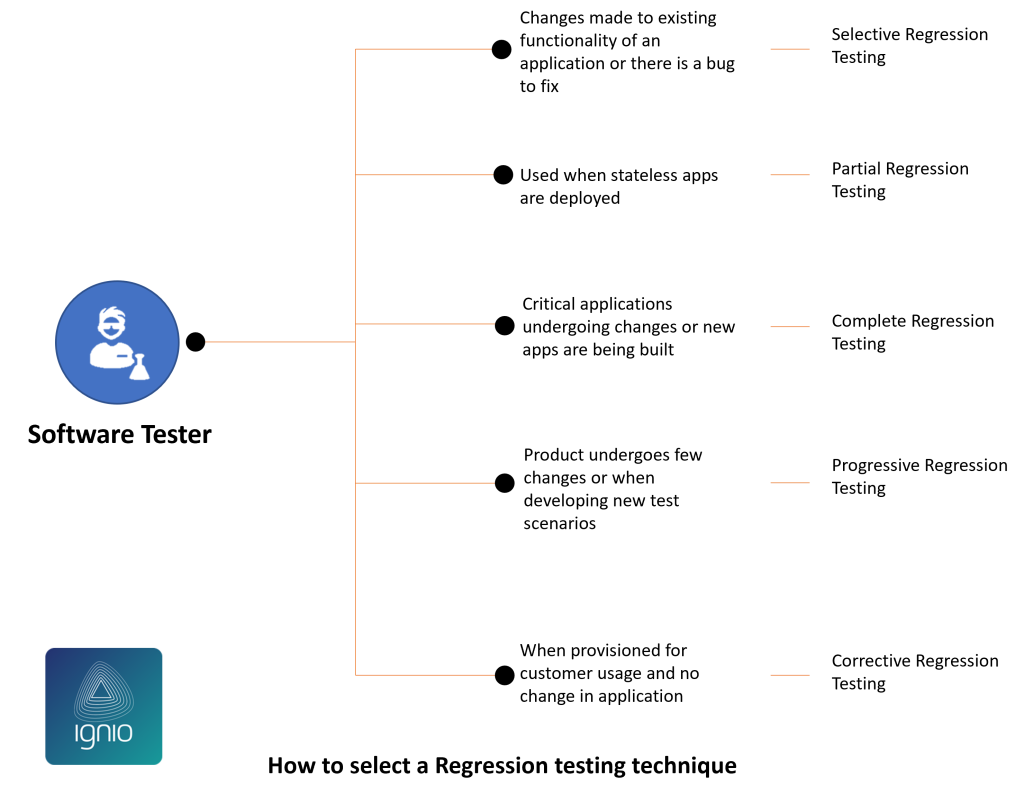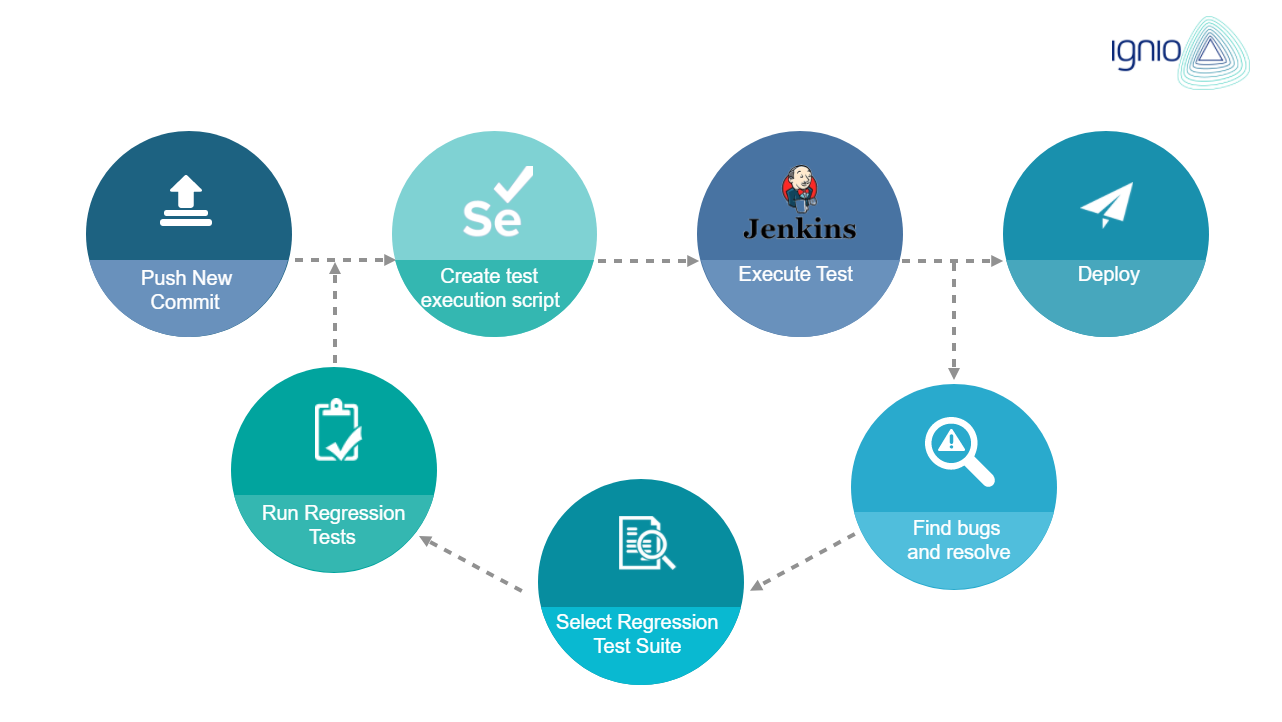

What Is Regression Testing in CI/CD?
source link: https://dzone.com/articles/what-is-regression-testing-in-cicd-and-can-we-auto
Go to the source link to view the article. You can view the picture content, updated content and better typesetting reading experience. If the link is broken, please click the button below to view the snapshot at that time.

What Is Regression Testing in CI/CD?
In this article, we are going to learn what regression testing is in CI/CD and can we automate it completely?
Join the DZone community and get the full member experience.
Join For FreeWith the advent of the CI/CD process, changes are inevitable and continuous. Any changes made to the software applications can produce an unexpected outcome and can impact businesses at large.
Regression testing is a type of software testing which is used to verify the changes made in an application that does not affect the existing functionality.
After the bugs are identified by engineers (software testers or developers), the developers modify source code to make it bug-free. If this process is completed every day, then it is often known as continuous testing. You can refer to the following diagram:

Any software modifications could impact part of the source code and hence the functionalities.
Regression Testing is carried out to ensure that the changes made do not introduce any anomaly or cause components to fail. Here the test cases covering the modified and affected part of the code are selected and executed. However, these test cases are selected and executed manually by QA testers, which can be time-consuming and frustrating.
Let’s discuss an example of regression testing
A testing team performs manual regression testing at the end of each iteration. Regression testing by this team completely relies on test cases written during the development phase. Maintenance of test suite is done manually by the team to delete fix inefficient test cases which help to maintain test suite. The testing reveals issues with a particular feature which gets changed often. Development teams identified the defects, rectified them, and made the feature stable.
In this blog, we shall discuss the best way to automate the regression testing process in CI/CD.
Types of Regression Testing in CI/CD
CI/CD allows organizations to deliver software quickly and efficiently. It facilitates an effective process for getting products to market faster than ever before, continuously delivering code into production, and ensuring bug fixes via the most efficient delivery method. Regression testing in a CI/CD pipeline can be used to make releases lean, efficient, and intelligent because as it helps in reducing the test execution time, cost, and resources and at the same time enhances the software quality.
There are five different techniques of regression testing based on the nature of changes made in the software or bugs repaired (or reversely the intention of the testing).

Selective Regression Testing
As the name suggests, this type of regression testing involves the execution of only selected test cases from the test suite when there is a change in the code. There is no need for running the complete test.
Some of the benefits of selective regression testing are:
- This kind of regression testing makes it possible to test and understand the outcome of code.
- It can be executed to check the effect of both previous code and changed code.
- Quick to execute and results can be seen quickly.
Partial Regression Testing
This type of regression testing involves the selection of certain related parts that could have been affected by any changes in the code. Partial Regression Testing involves adding new parameters to the existing system to determine if the system is working as usual after making modifications.
Some of the benefits of this kind of regression testing are:
- Easy to detect important bugs in current code.
- The testers can check bugs within the current code without an impact on the application.
- Quick to perform and saves time.
Complete Regression Testing
Complete regression testing involves the examination of the entire application. It is used when QA testers want to perform a 100% coverage of test cases. This regression testing is usually used in cases where the project owner doesn’t want to make big or more changes during the testing.
Some of the benefits of this kind of testing are:
- This regression testing allows you to restore any changes that may be done during the process.
- Ability to find unexpected bugs in a short period.
Progressive Regression Testing
Progressive regression testing comes into the picture when any project requirements are changed, or any new build is deployed. The new test scenarios are created based on the needs. Testers can execute the newly added test scenarios without touching the current application features.
Benefits of this kind of regression testing are:
- In this testing, a part of the test cases is taken from the test suite and is used which reduces the cost and effort involved in designing all the new test cases.
Corrective Regression Testing
Corrective regression testing is done when existing test cases are used to rapidly check for a tool and find out if there are some abnormalities. This regression testing is conducted on current test cases that involve no code changes. Benefits of this kind of regression testing are:
- This regression testing takes lesser time in detecting bugs.
- It is convenient and can be used repeatedly.
Benefits of Regression Test Automation
- Enhanced Productivity: One of the biggest benefits of Regression test automation is that it reduces the dependency on testers and hence frees up the resource.
- Better Stability and higher throughput: Regression test automation helps in reducing the overall cost of testing by providing quick executions with minimum use of resources.
It is important for Regression test automation tools to provide self-healing for automated tests generated, thus helping the tests to dynamically adapt to the changes in the code during development. This brings the overall reduction in code defects thereby providing the stability to the product and improving efficiency.
- Quick to Test and Execute: Regression test automation ensures that tests are run 24/7, 365 days a week. With a test scheduler, one can do things like setting up test execution during the night, so no one has to sit around and wait for test results or can execute them at specific time intervals.
- Quick Defect Resolution: Regression test automation, when done in an Agile way of delivery, often provides feedback after every execution, thereby ensuring that defects are regularly rectified or taken care of and the piece of software is defect-free before going to production.
How Can We Automate Regression Testing for Software Tester?
CI/CD Architects often want to automate the software delivery process to ensure the software is delivered at speed. Testing is a function that is sought after by many architects for automation. Let us understand the stages of Regression Testing which a QA engineer would perform for Regression Testing and various tools available for Regression test automation. Typically, there are three stages of Regression Testing:
Test-Suite Generation Stage
Here a QA engineer would generate the test-suites (including the test cases and script) based on the code changes made in the application and the time in hand for testing. It can range from hours to days based on the complexity of changes in the applications.
Tools to automate Regression Test generation: Selenium, Appium, and Cucumber helps in generating automated test suites.
Test-Suite Execution Stage
After these test suites are generated, QA engineers or software testers can perform Regression Testing by executing the test case based on their requirements. The test-suite execution can be scheduled or made to run as per the requirement, easily using an automation platform. Continuous integration tools are often handy as they usually demand very little interference from software testers, to find the impact of the new applications, and to identify bugs.
Tools to automate test-suite execution: Jenkins
Test-Suite Maintenance Stage
After the developers make the changes to the source code, Regression Tests also need to be changed. Maintaining the test cases becomes a highly complex process that requires substantial human effort when done manually. Many tools provide self-healing for automated tests generated, thus helping the tests to dynamically adapt to the changes.
Tools to maintain test-suite execution: Healenium

Challenges With Regression Test Automation: Must Know for the QA Engineer
There are particular challenges in architecting Regression Test automation in a CI/CD process using incumbent tools.
Automation of all the three stages of Regression Testing that is test suite generation, test suite execution, and test maintenance, can prove to be a big hassle. It includes taking 2-3 tools and involving testers to write scripts to maintain and integrate the tools for automation.
Tools may execute, however, QA engineers still must spend time identifying test cases based on the impact. In the CI/CD process, when many changes are happening every day and are planned to be deployed fast, selecting the right test cases to minimize failure is time-consuming.
Maintaining the test cases while adapting to the changes is the biggest challenge in today’s software testing world. Huge test case repositories are created, which are still maintained by QA engineers manually.
Applying AI to Regression Testing
If there is a scope of automation one should definitely move ahead with the automation. Manual processes are slow, time-consuming, and tedious. Besides they are error-prone. Testing is a very important part of delivering software in a fast and reliable way. So organizations must find the right tool that will fit with your toolchain and will not be a bottleneck while you scale.
Recommend
About Joyk
Aggregate valuable and interesting links.
Joyk means Joy of geeK